|
Sheet
Music with Phonograph Connections

Sheet Music
Cover Art and Titles related to the Phonograph
By Doug Boilesen, 2006
The phonograph and sheet music have
a close relationship since early popular music was normally sold as
sheet music to the public before any recording of it would be heard.
The following show examples of an even
closer relationship between music publishing and the phonograph with
images of a phonograph on the sheet music cover and/or music which
included "Phonograph" in its title, e.g., At Home,
With My Pathé Pathéphone; The Song of Mister
Phonograph; Phonograph March Brillante; The Phonograph
Waltz, etc.
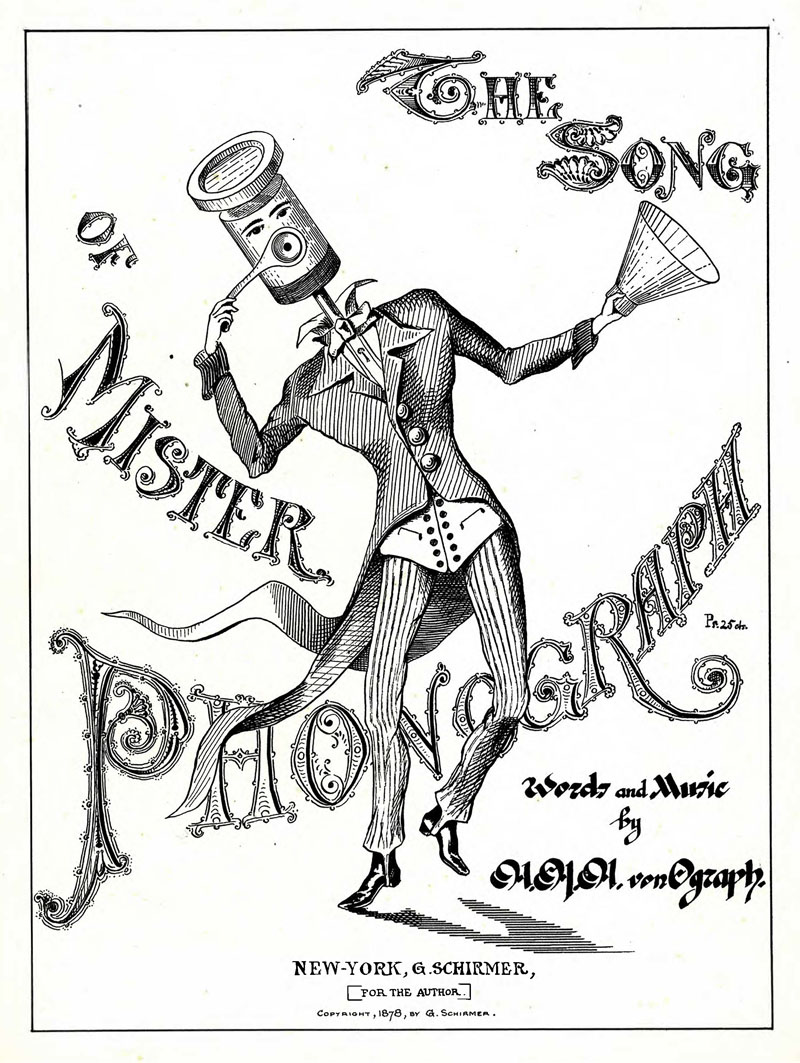
The
Song of Mister Phonograph, G.
Schirmer, New York, 1878. Source:
Library of Congress - LISTEN

Phonograph
March Brillante, by Charles D.
Blake, White-Smith Music Publishing Co., Boston, 1878 (imprint of
this sheet music and Marie Rôze is 1906.) Source:
The
Lester S. Levy Sheet Music Collection, Johns Hopkins University.
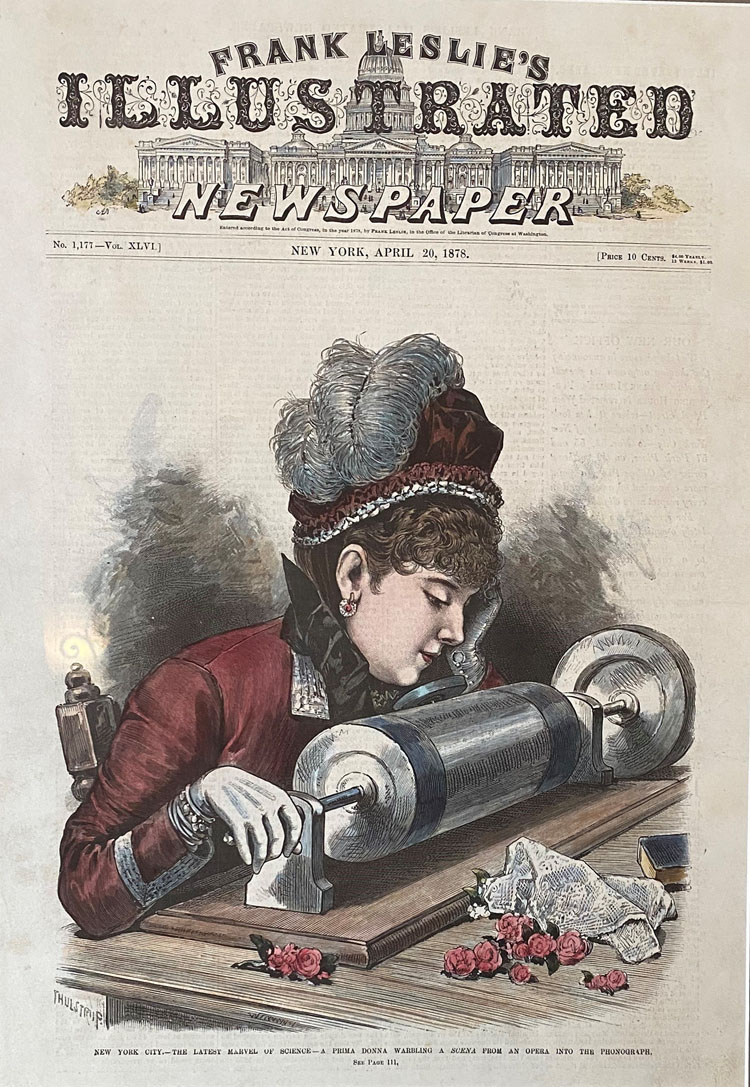
Engraving
(hand-colored) of operatic star Marie Rôze
recording on an Edison tinfoil Phonograph from Frank Leslie's Illustrated
Newspaper, April 20, 1878 - Artwork by Thure de Thulstrup. Source:
(PM-1804)
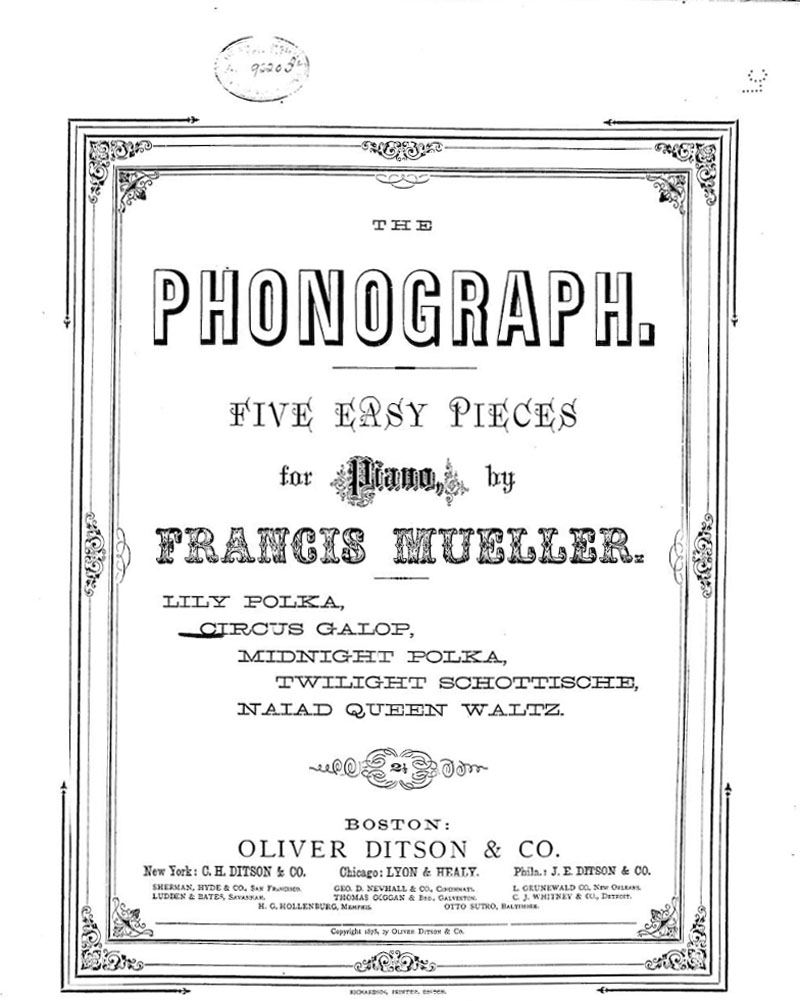
The Phonograph. Five Easy
Pieces for Piano by Francis Mueller. Oliver Ditson & Co., New
York, 1878 - Source: Library
of Congress
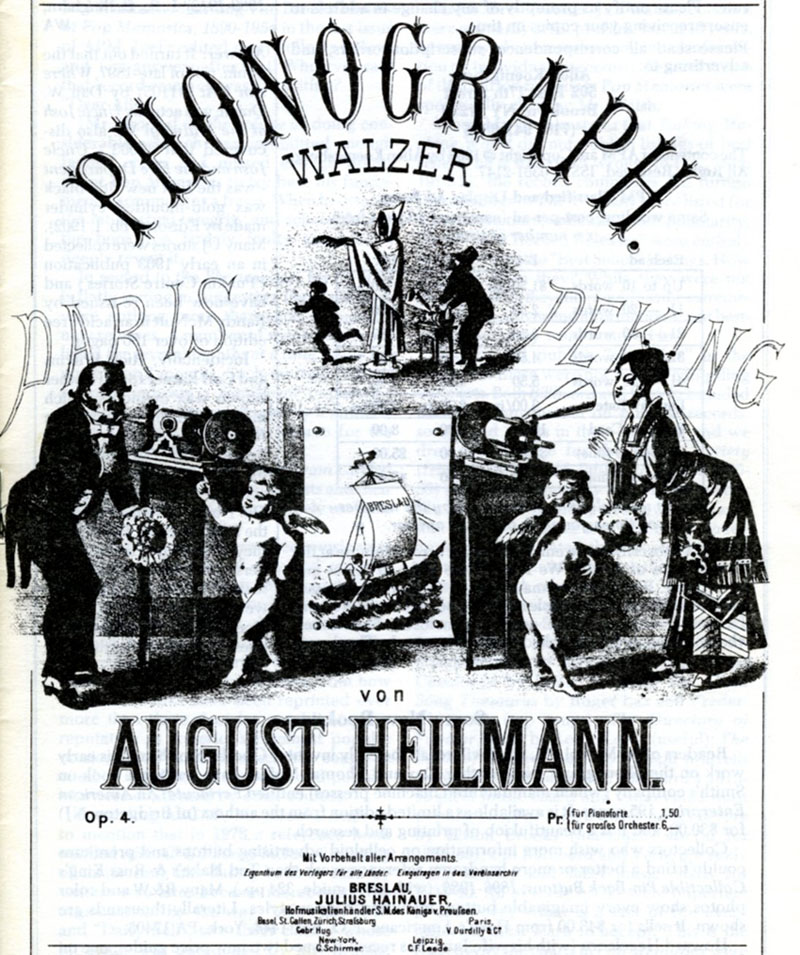
Phonograph
Waltzer, by August Heilmann.
Illustration shows engraving
of messages being sent from Paris to Peking via tinfoil phonograph
circa 1878. Source:
Antique
Phonograph Monthly (courtesy of Allen Koenigsberg) and John
Reid (Issue No. 77, 1988).
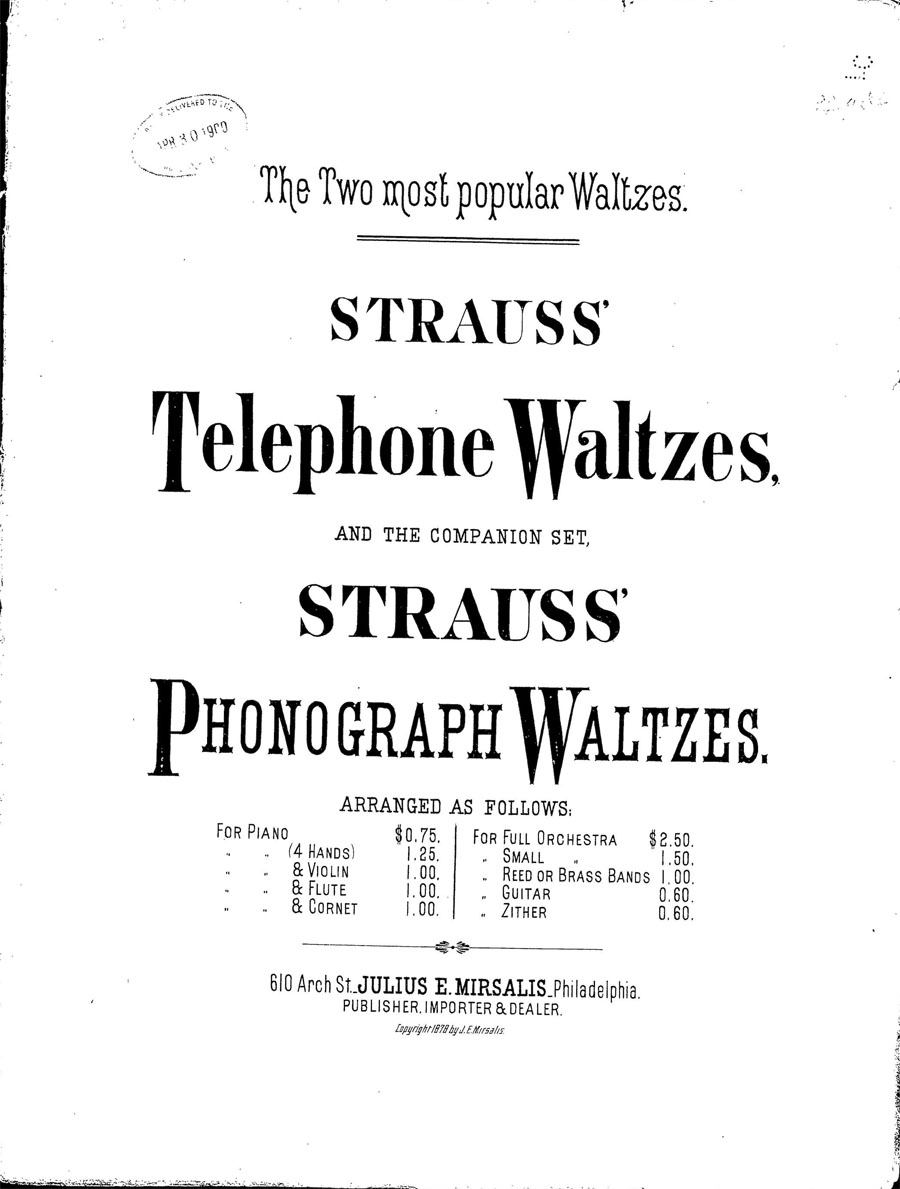
Strauss' Phonograph Waltzes,
Julius E. Mirsalis, Philadelphia, 1878. Source:
Library of Congress, Music Division (1)
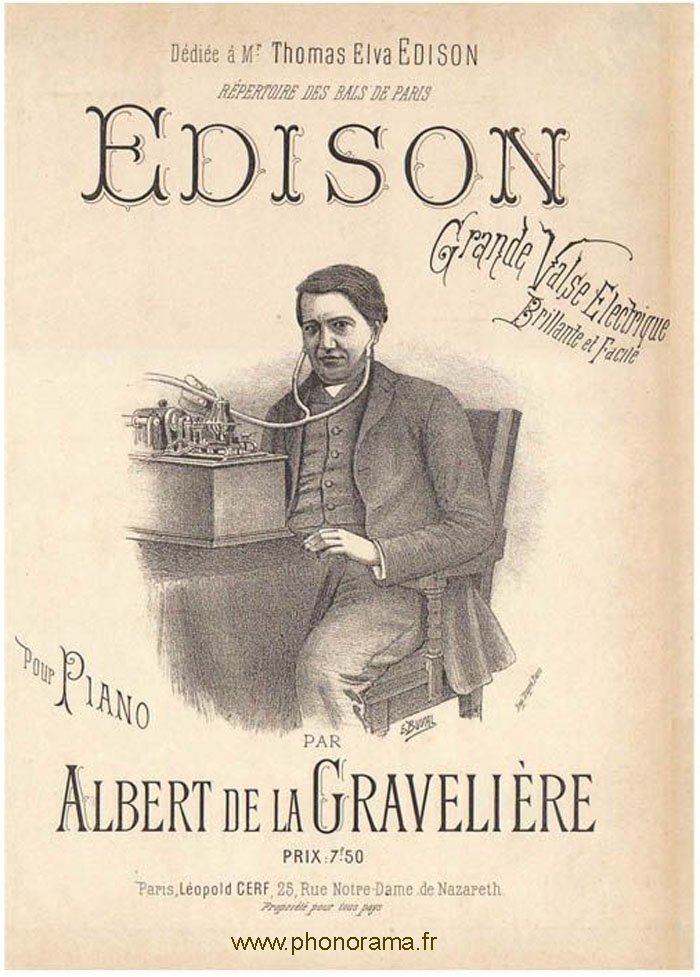
The Grand Electric
Waltz by Albert de la Gravelière for piano, France,
1889. Dedicated to Thomas Elva (sic) Edison after the marketing of
his Class M Phonograph in 1889. Source: www. phonorama.fr
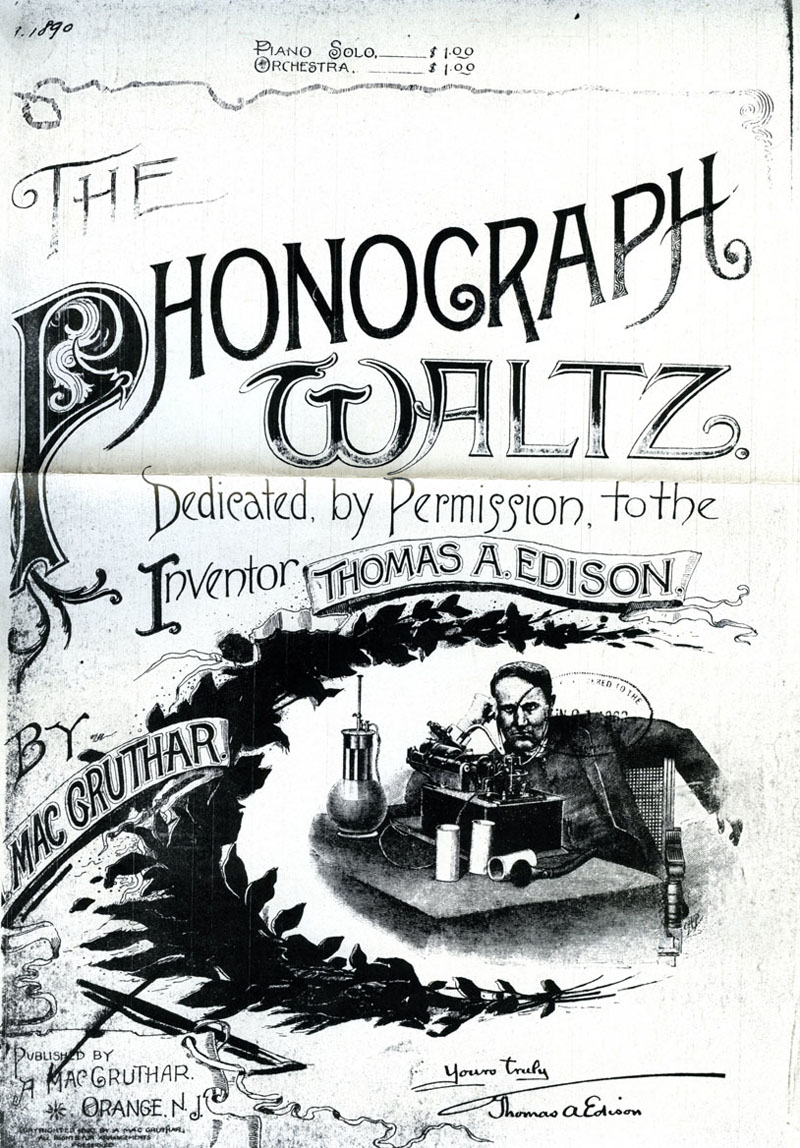
The Phonograph Waltz by
A. MacGruthar, Orange, N.J. 1890 - Dedicated
by Permission to the Inventor, Thomas A. Edison.
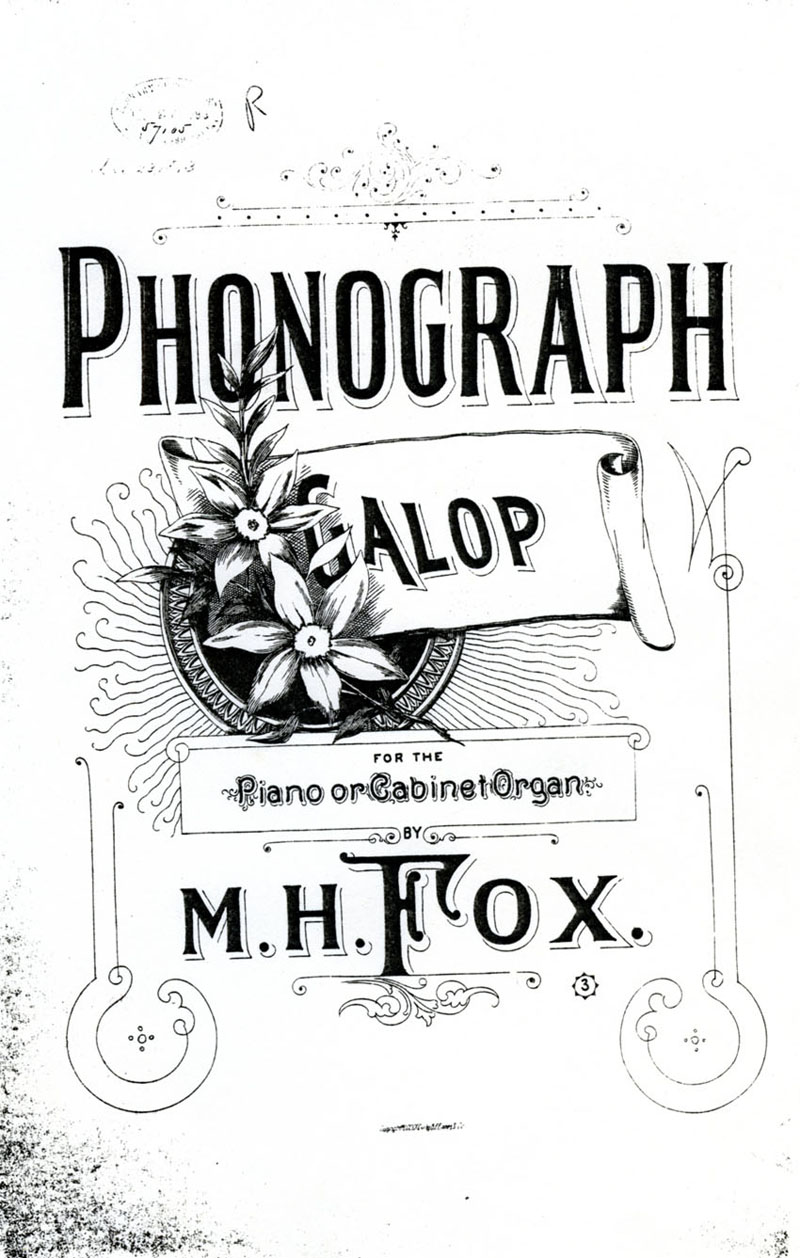
Phonograph Galop for the
Piano or Cabinet Organ by M.H. Fox (c.1893).
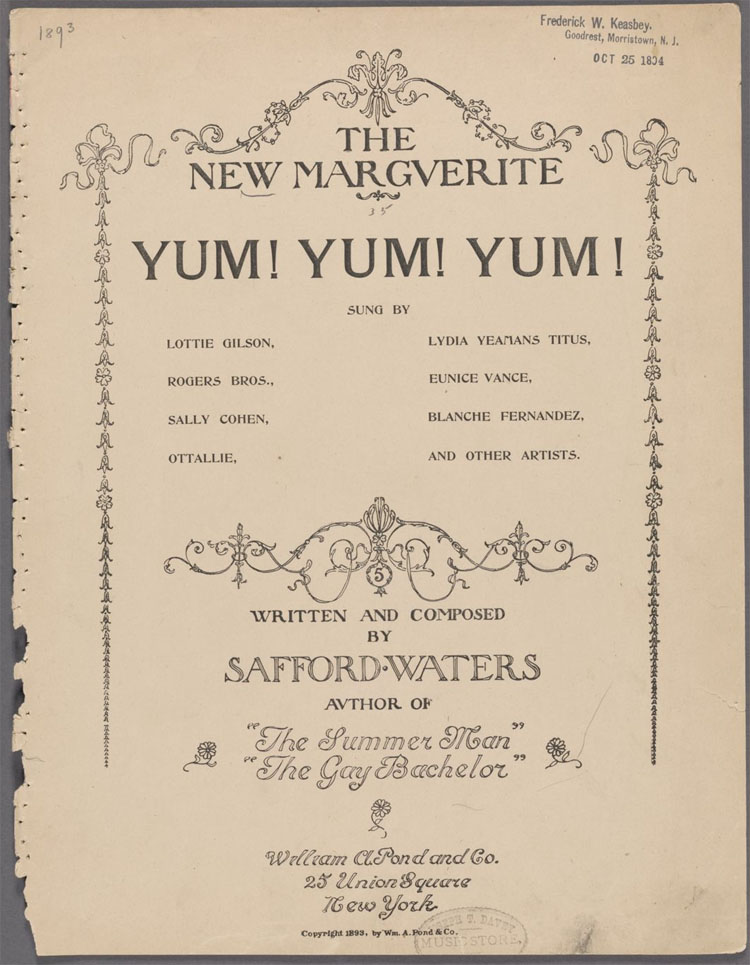
"Yum, Yum, Yum"
by Safford Waters, William A. Pond and Co., New York, 1893 (For lyrics,
not illustraton). (From New
York Public Library)
Dedication above caption
title: To the most charming of her sex this song is truly dedicated.
Part of verse 4 reads:
You hear her name eternally on every phonograph.
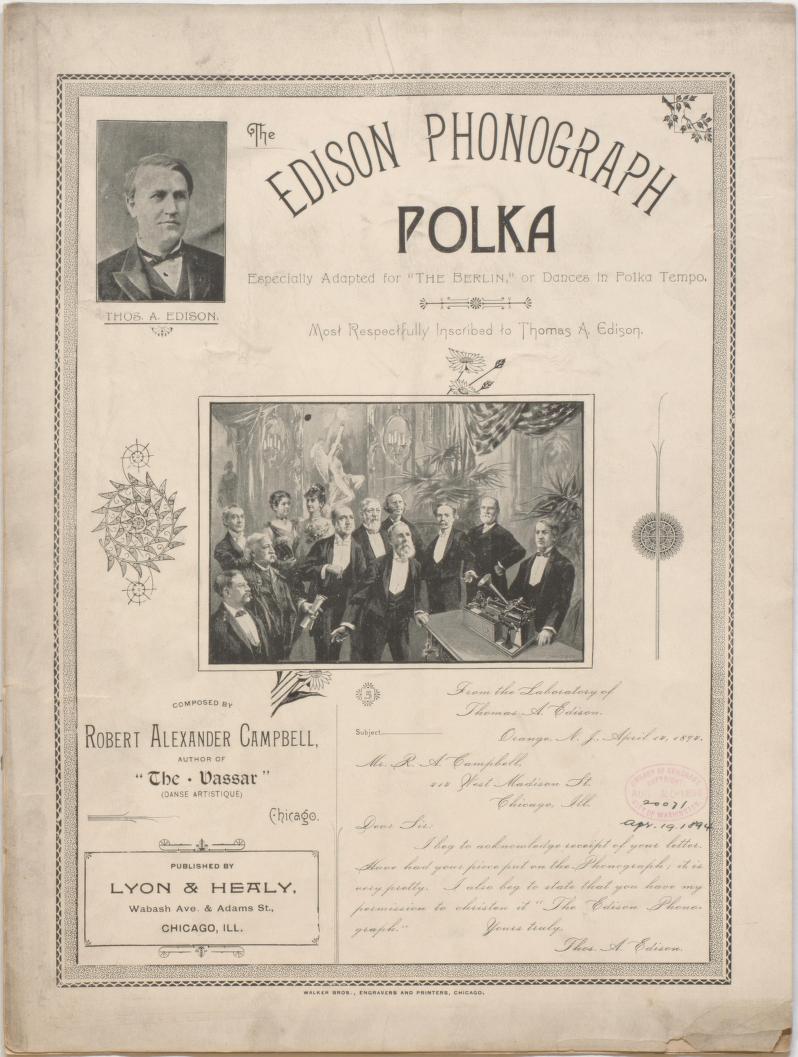
The
Edison Phonograph Polka by Robert
Alexander Campbell, Lyon & Healy, Chicago, ILL., 1894; Artist:
Engraving by Walker Bros., Chicago, 1894. Source:
Archive.org
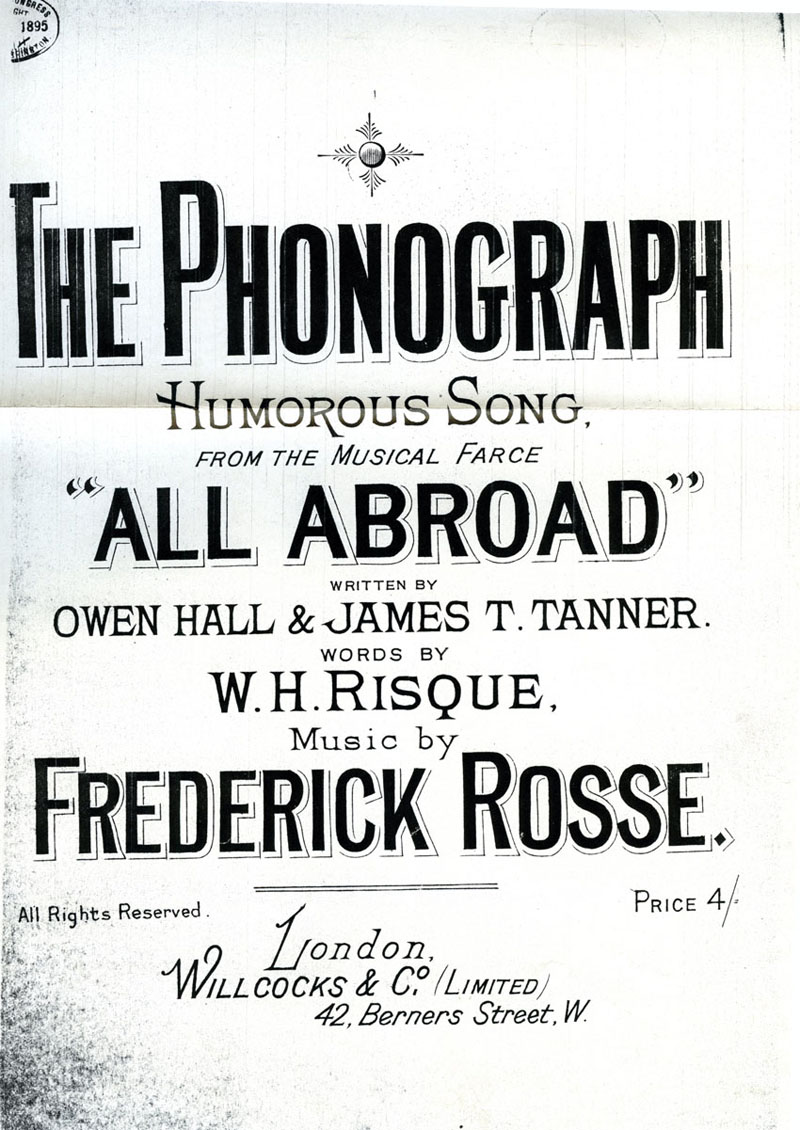
The Phonograph - Humourous Song,
music by Frederick Rosse; Willcocks & Co., (Limited), London,
1895. Source: Library of Congress
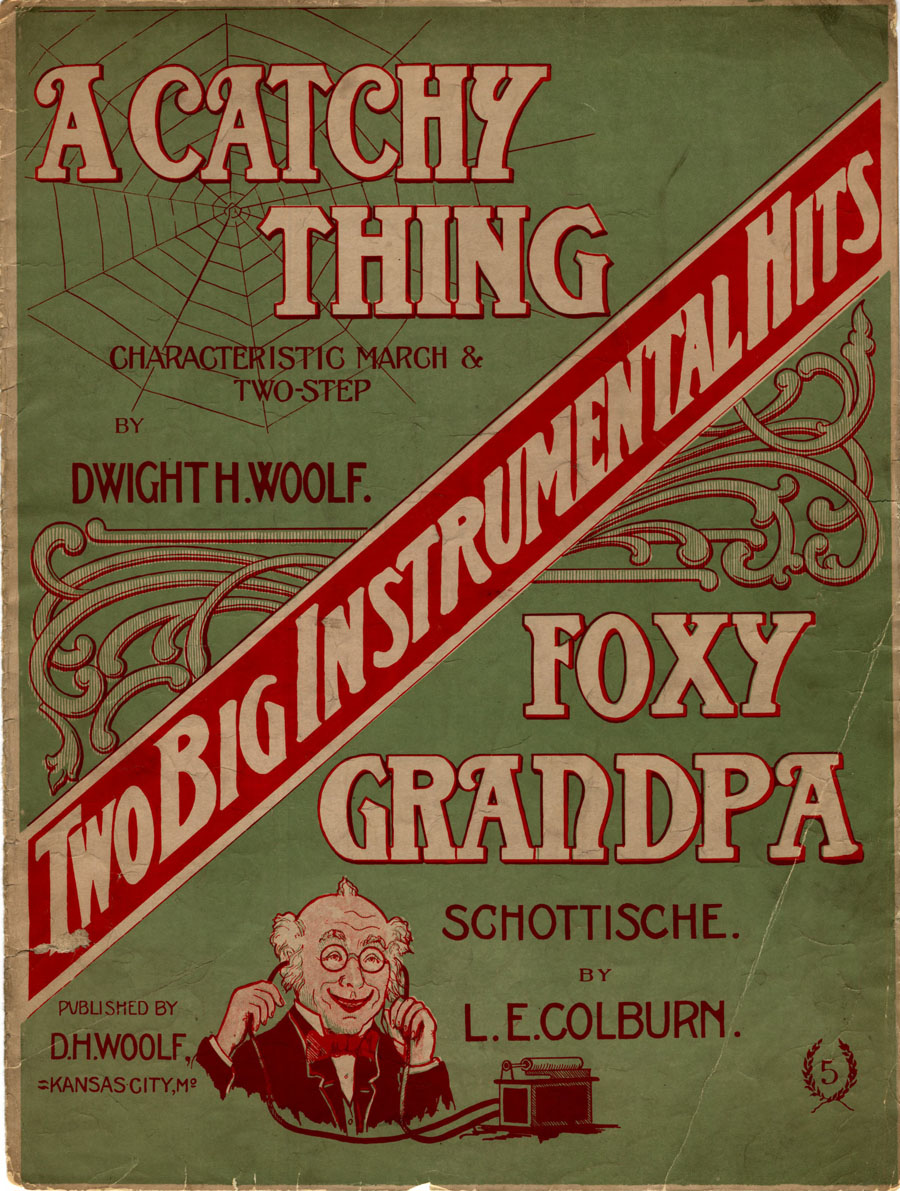
Foxy Grandpa by D. H.
Woolf, Kansas City, MO 1905. Source:
Phonographia Sheet Music Collection (PM-0790)
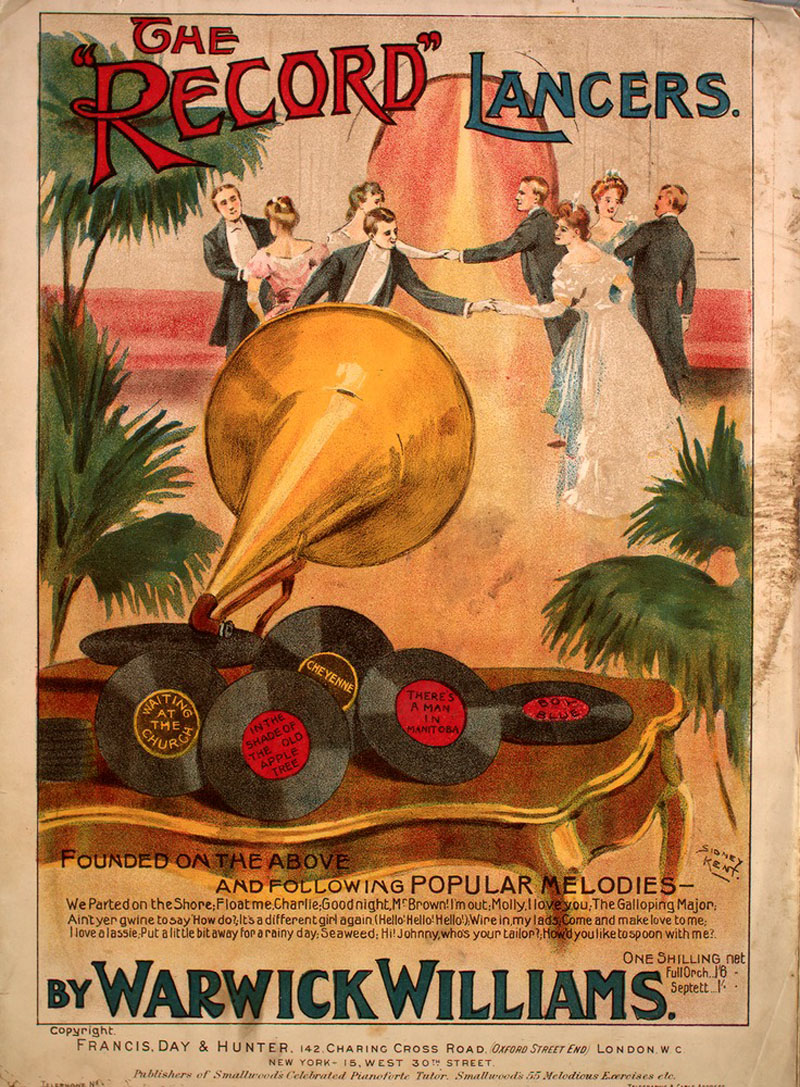
The
"Record" Lancers by
Warwick Williams, Francis,
Day & Hunter, London 1906, Illustrated
by Sidney Kent, 1906. Source:
The
Lester S. Levy Sheet Music Collection, Johns Hopkins University.
LISTEN

Hoop-e-kack
by Thomas S. Allen, Walter Jacobs,
Boston, Massachusetts, 1909 - Artwork
by Starmer. Source:
Sheet Music Collection - York University. LISTEN
to Indestructible Cylinder Record No. 1113 - Banjo solo by Vess L.
Ossman.
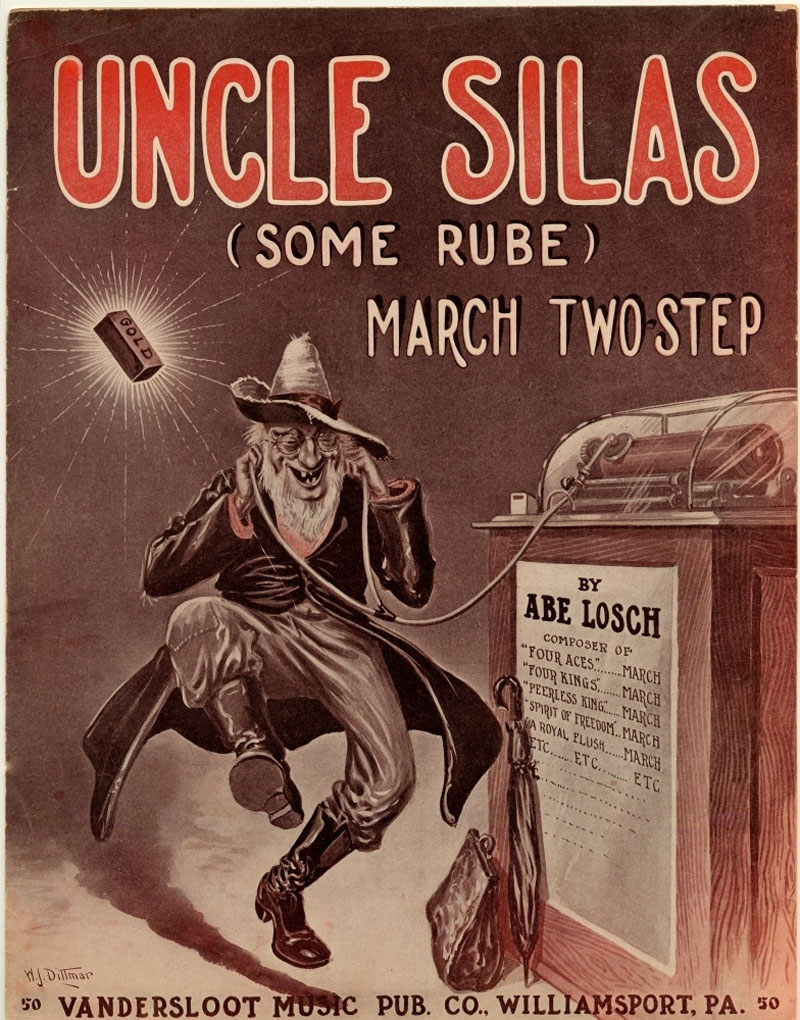
Uncle
Silas, Vandersloot Music Pub.
Co., Williamsport, PA., 1913 (PM-0791) - Artist:
W. J. Dittmar. Source: (PM-0791 Phonographia Sheet Music Collection)
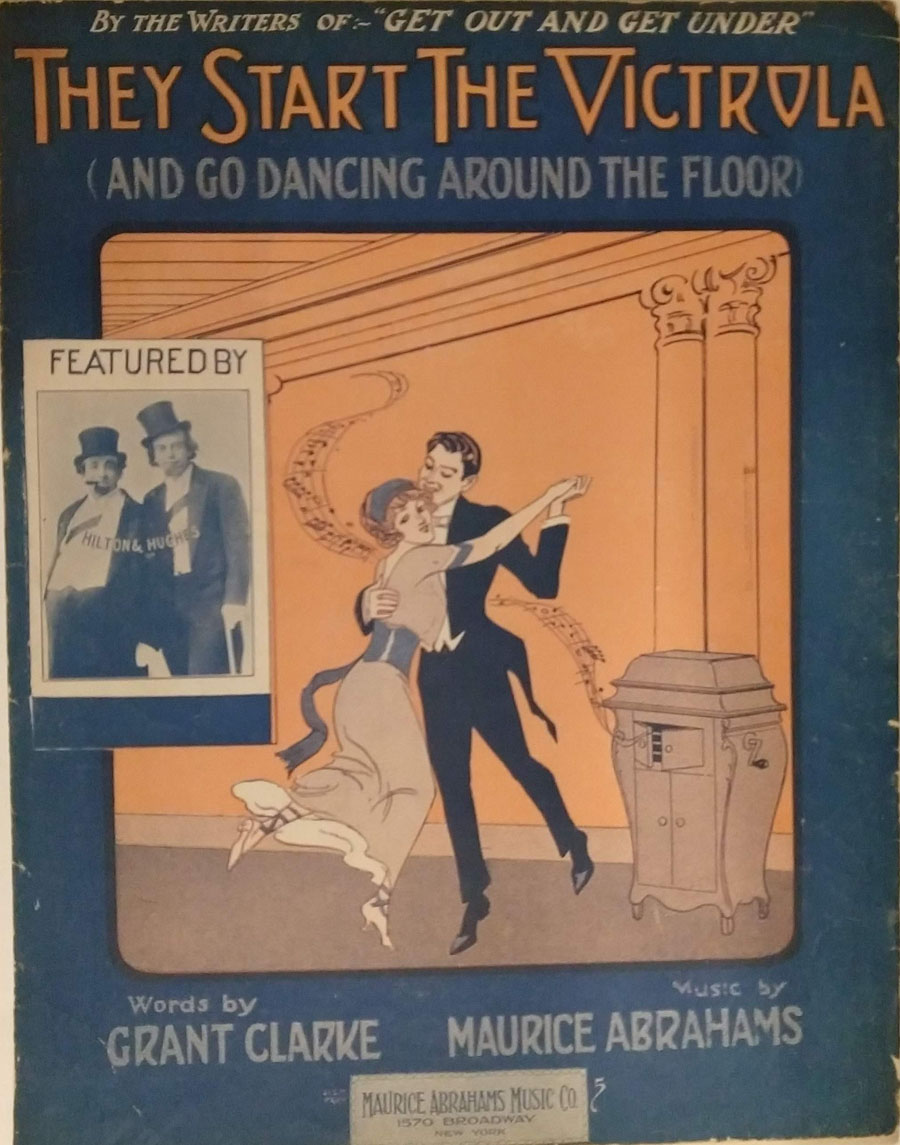
They Start the Victrola (and go
dancing around the floor), Maurice Abrahams Music Co.,
New York 1914. Source:
Phonographia Sheet Music Collection (PM-0784)
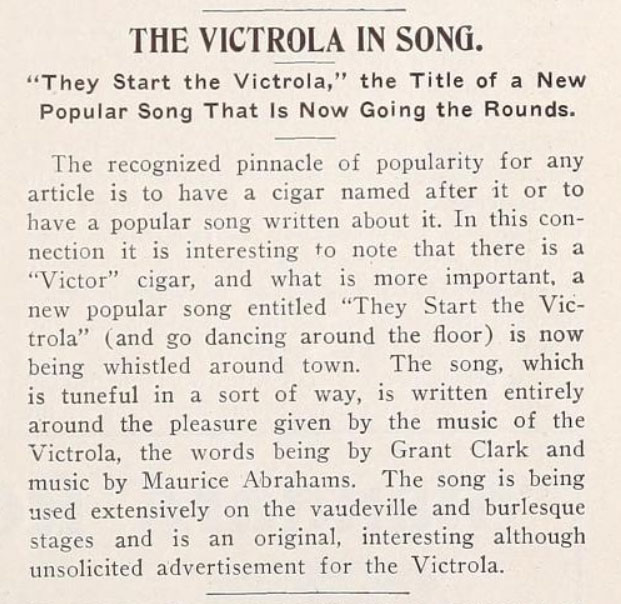
The Victrola in Song.
The Talking Machine World, September 15, 1914
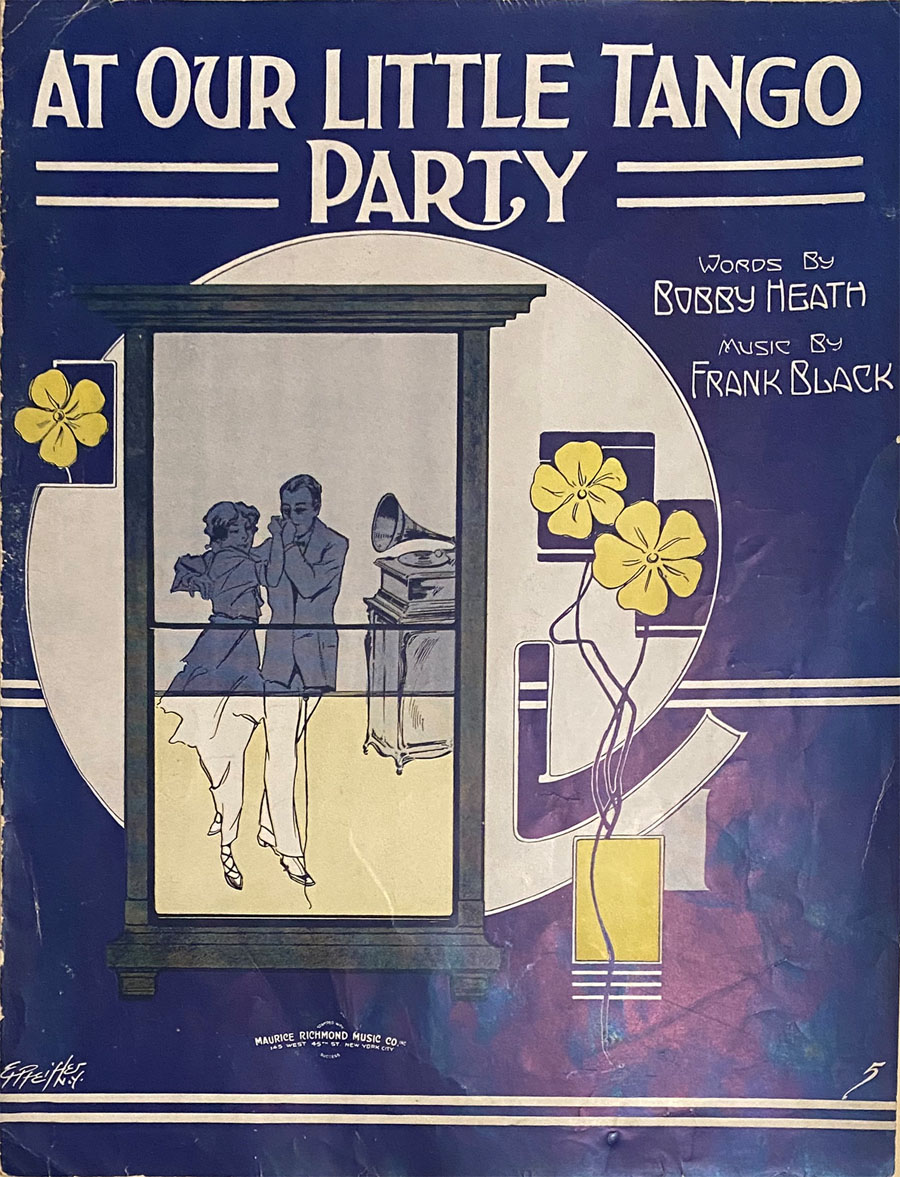
At Our Little Tango Party,
Maurice Richmond Music Co., New York City 1914 - Illustration by Edward
H. Pfeiffer. Source: Phonographia
Sheet Music Collection (PM-0789)
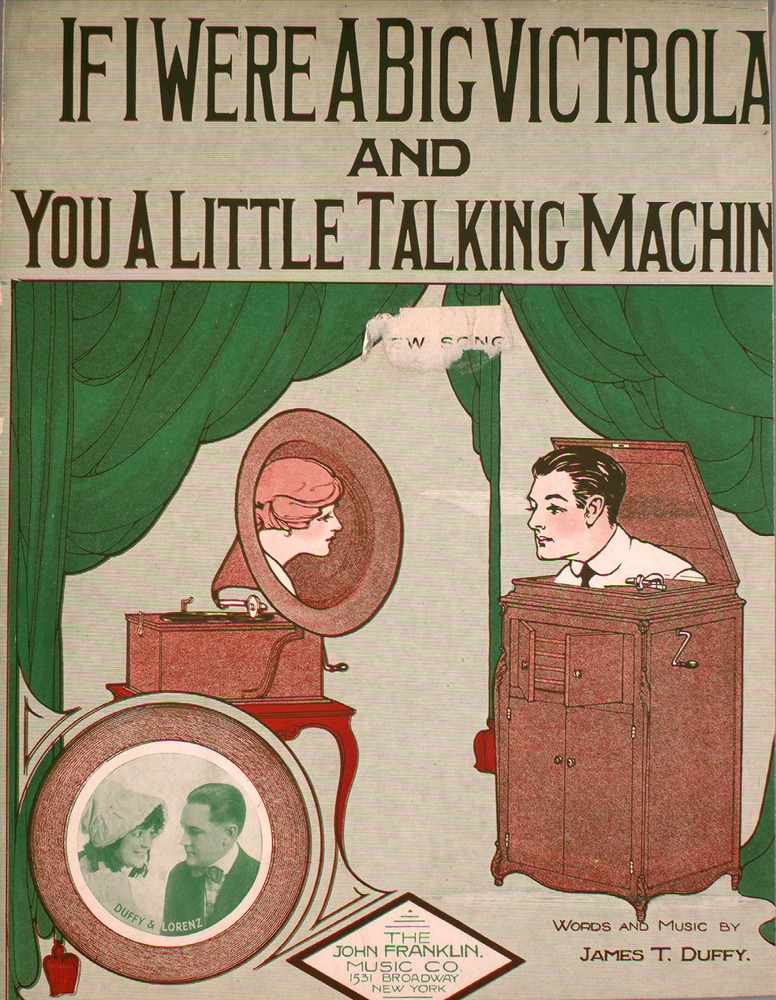
If I Were a Big Victrola and
You a Little Talking Machine, The John Franklin Music Co.,
New York, 1915. Source:
The
Lester S. Levy Sheet Music Collection, Johns Hopkins University.
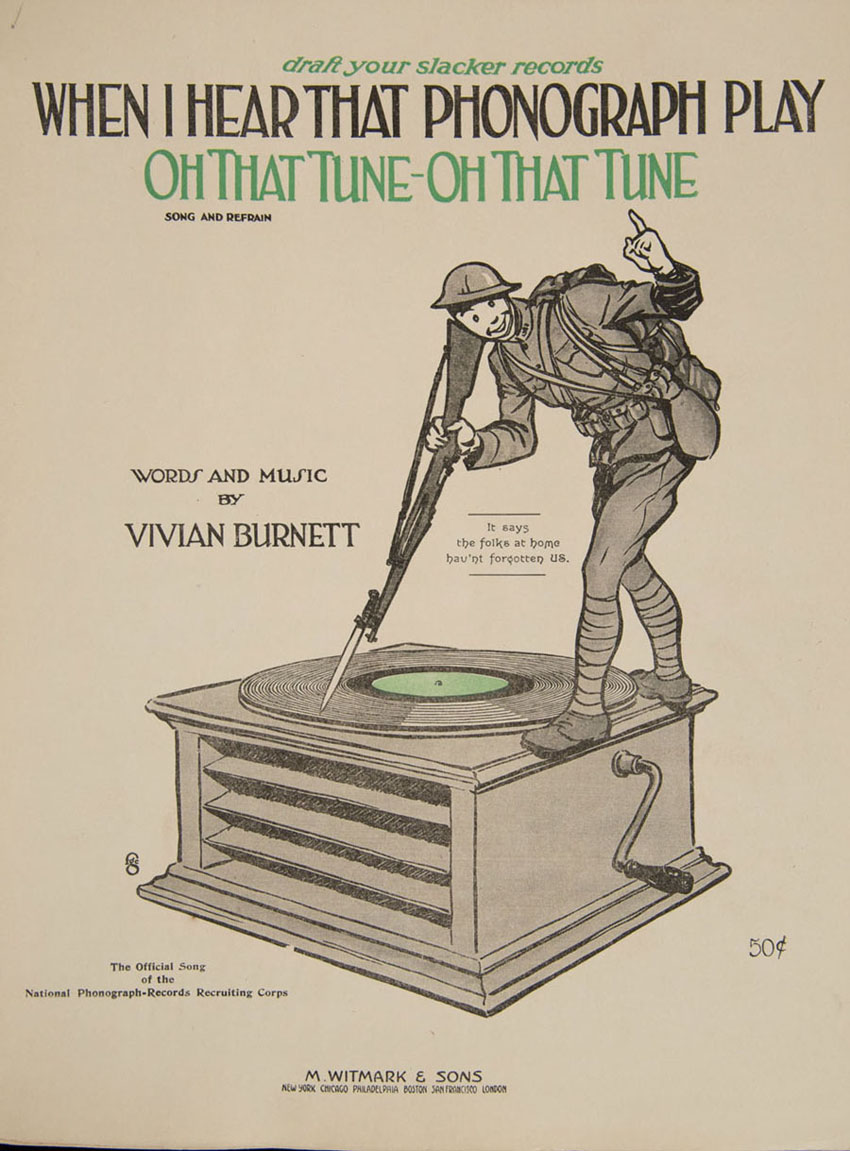
When I Hear That Phonograph
Play, M.
Witmark & Sons, New York 1918. Source: James
Francis Driscoll collection
of American sheet music.
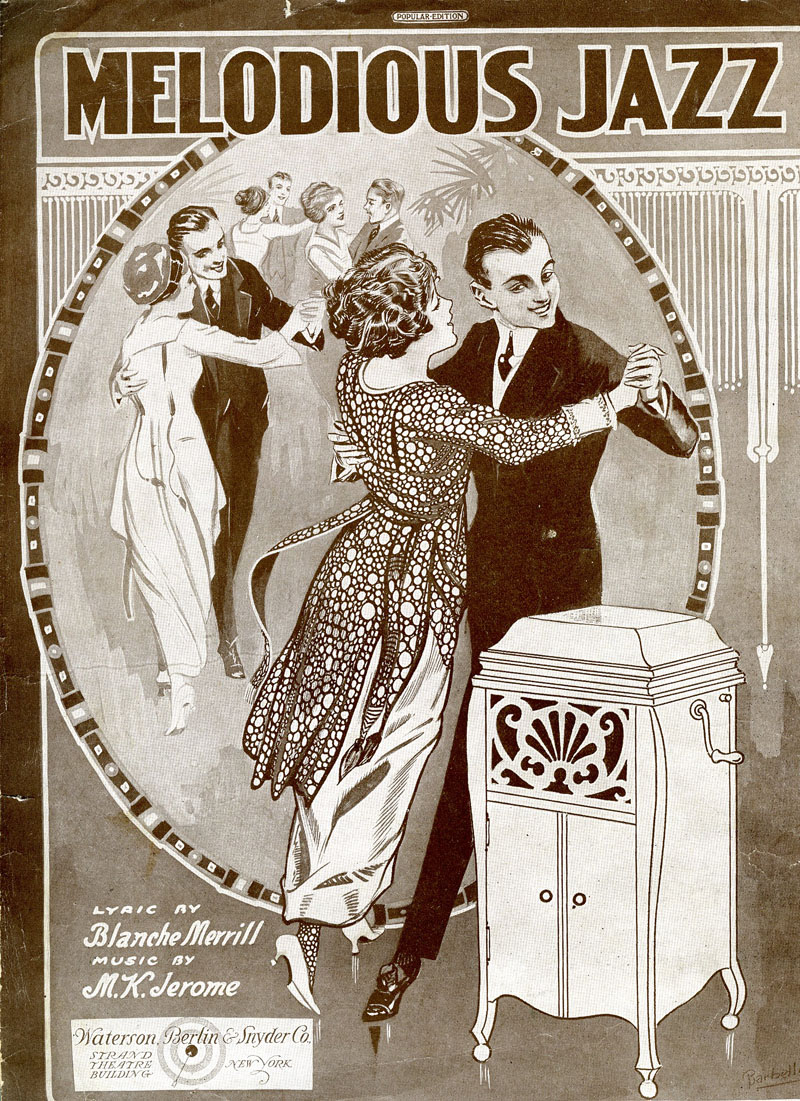
Melodious
Jazz, Waterson, Berling & Snyder
Co., New York 1920. Source: Phonographia
Sheet Music Collection (PM-0347).
LISTEN
to Noble Sissle sing "Melodious Jazz" on vertical-cut
Pathé 22357, recorded circa March 1920.
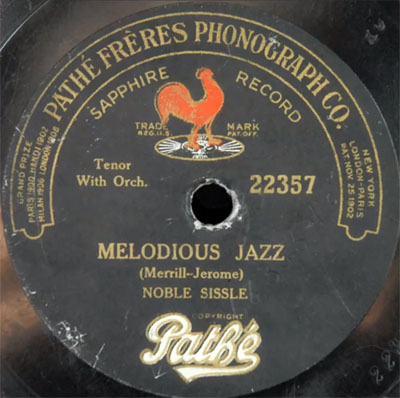
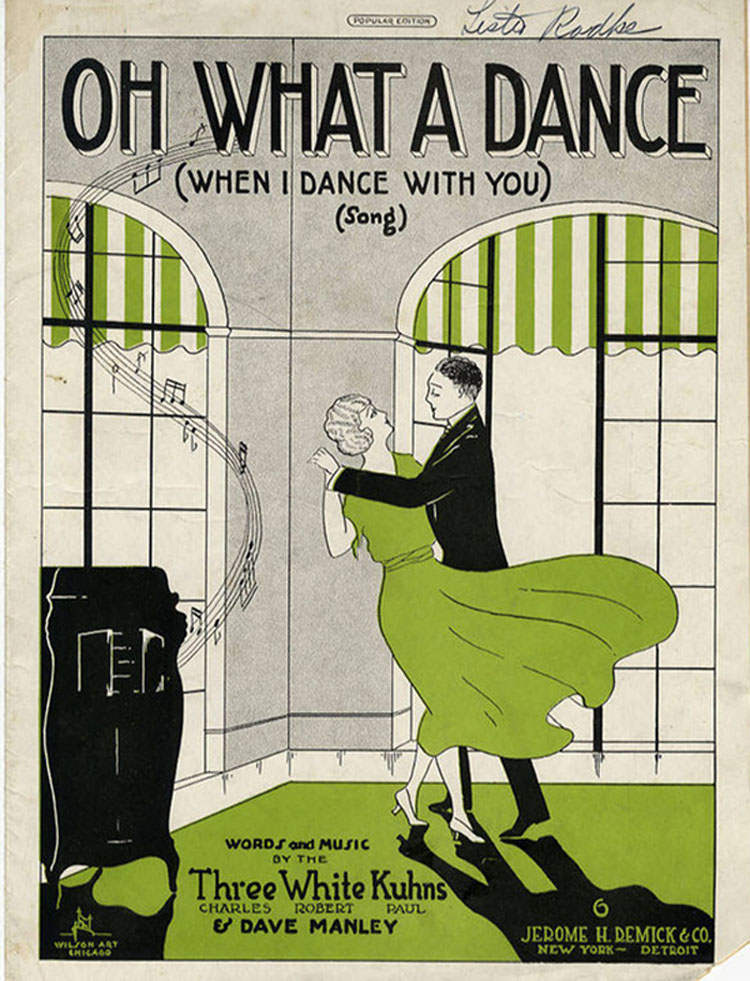
Oh, What a Dance (When I Dance
with You) by the Three White Kuhns & Dave Manley, Jerome
H. Remick & Co., New York 1920
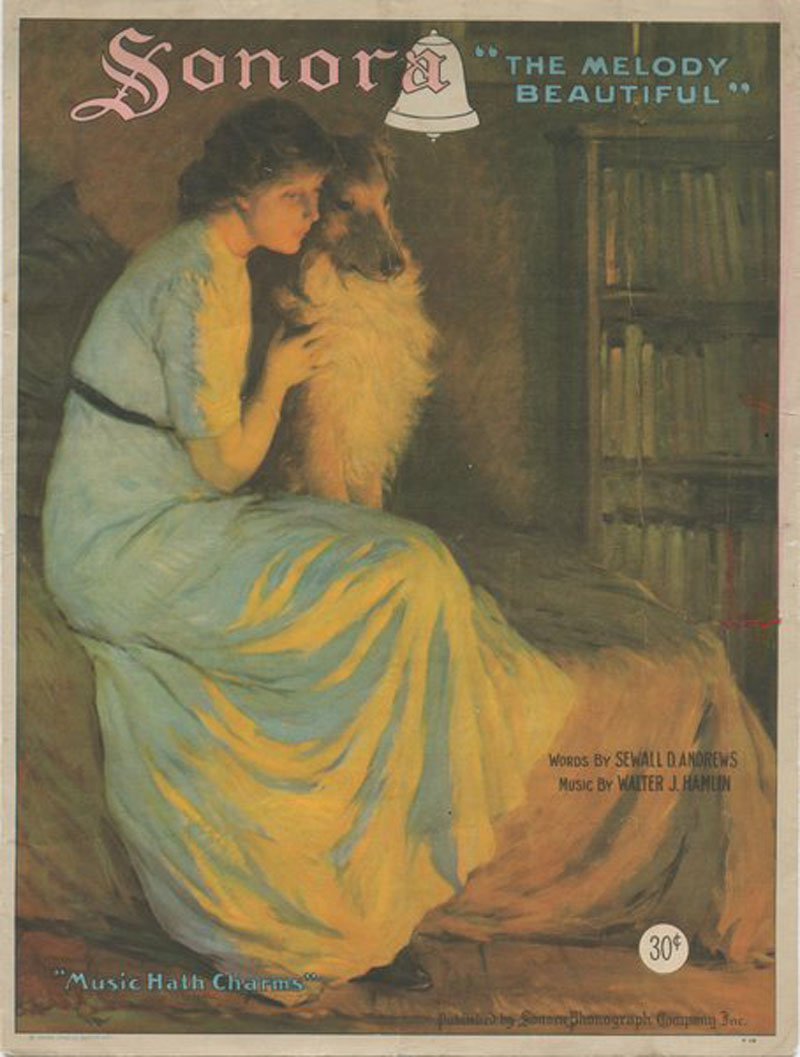
Sonora, “The Melody Beautiful,”
Sonora Phonograph Company Inc. 1920. Source: Phonographia Sheet Music
Collection (PM-0788)
“Music Hath Charms.” Lyrics by Sewall
D. Andrews, music by Walter J. Hamlin. Lithograph
by Hayes Litho Co., Buffalo, N.Y.
Poem inside front cover is titled “The
Day,” which describes working people’s hard life by day but relaxing
around the phonograph’s dreamy waltzes and gay fox trots at night.
Sonora's trademark was "Clear
as a Bell."
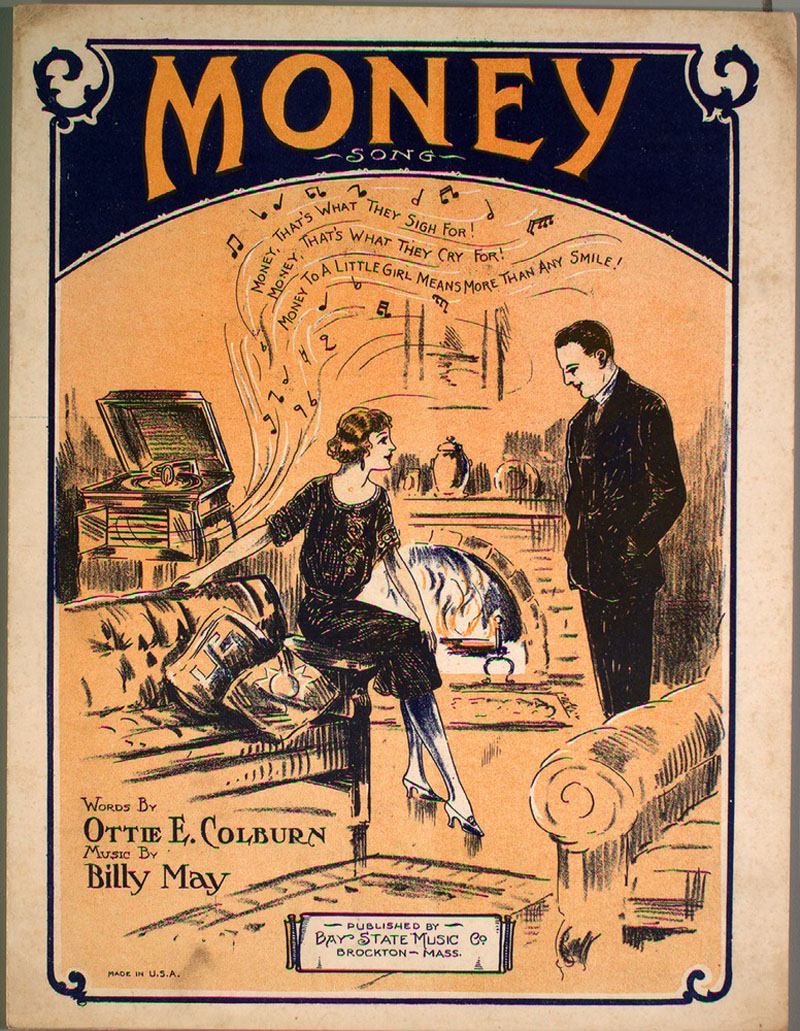
Money
Song, Music by Billy May, Bay
State Music Co., Brockton, Mass. 1922. Source:
The
Lester S. Levy Sheet Music Collection, Johns Hopkins University.
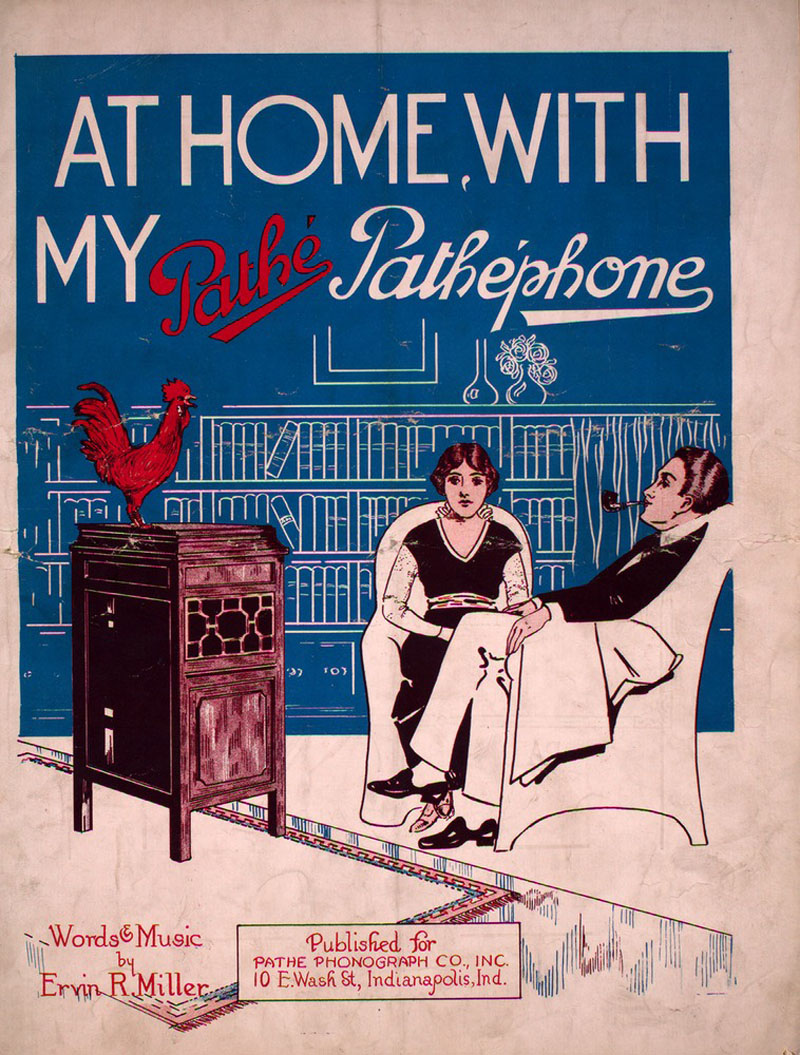
At
Home With My Pathe Pathephone, Pathe
Phonograph Co., Indianapolis, Ind. 1916. Source:
The
Lester S. Levy Sheet Music Collection, Johns Hopkins University.
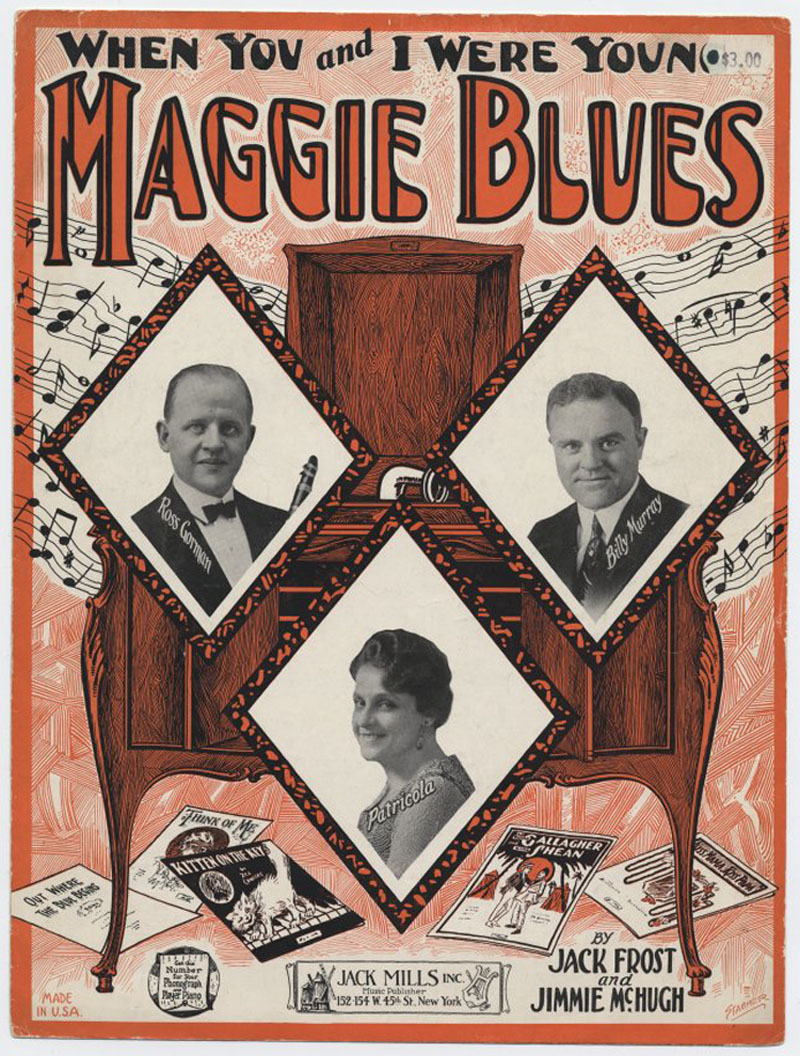
Maggie
Blues, Jack Mills, Inc., New York c.1922 - Artist:
Starmer. Source: WIMA Collections:
Irish Fest Collection. LISTEN
on the Library of Congress National Jukebox
Victor Record 19010 - The
Virginians, Isabelle Patricola, Billy Murray 1922-12-20
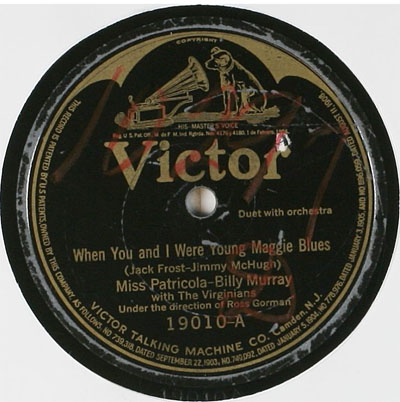
Label and recording courtesy
of Library of Congress
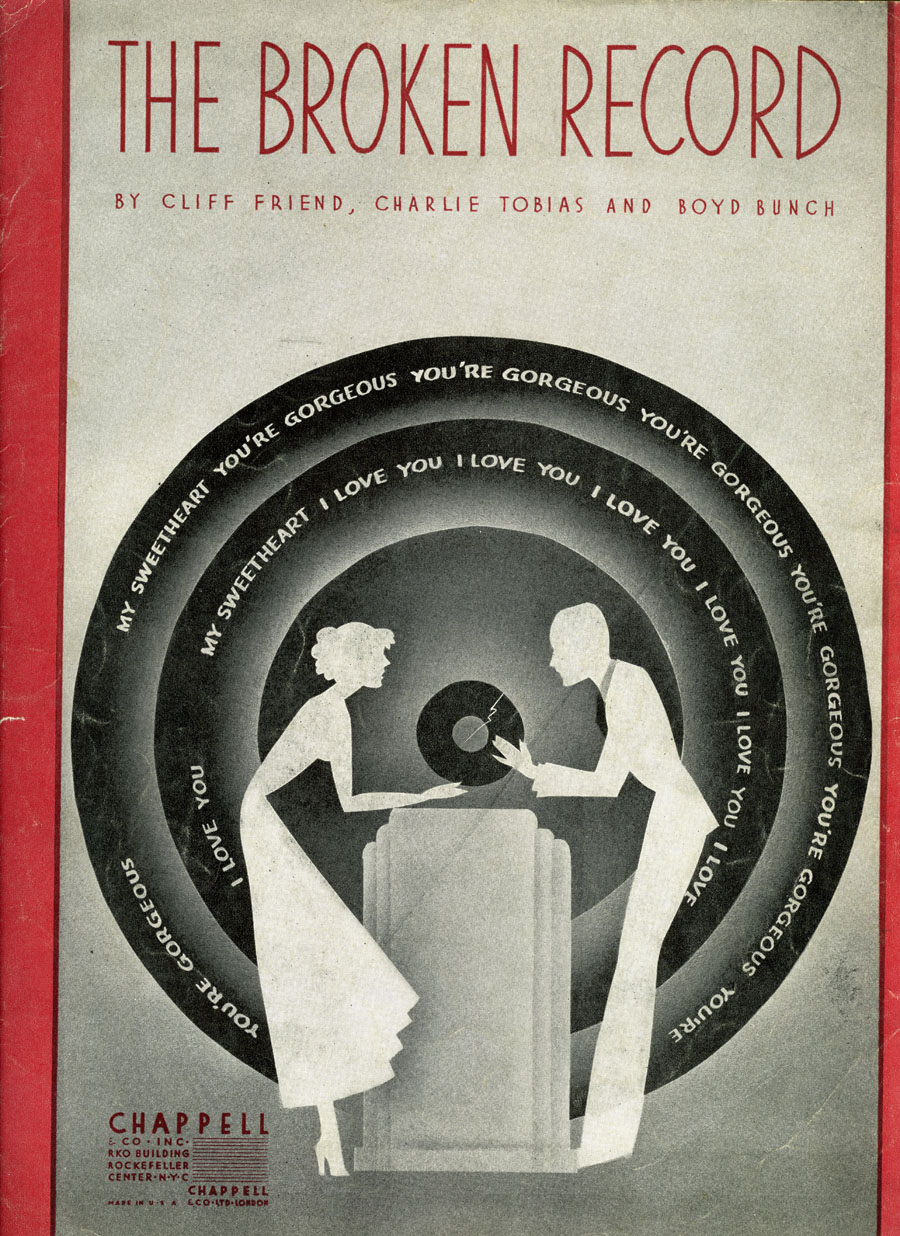
The Broken Record,
Chappell & Co., Inc. New York City, 1935. Source: Phonographia
Sheet Music Collection (PM-0541).
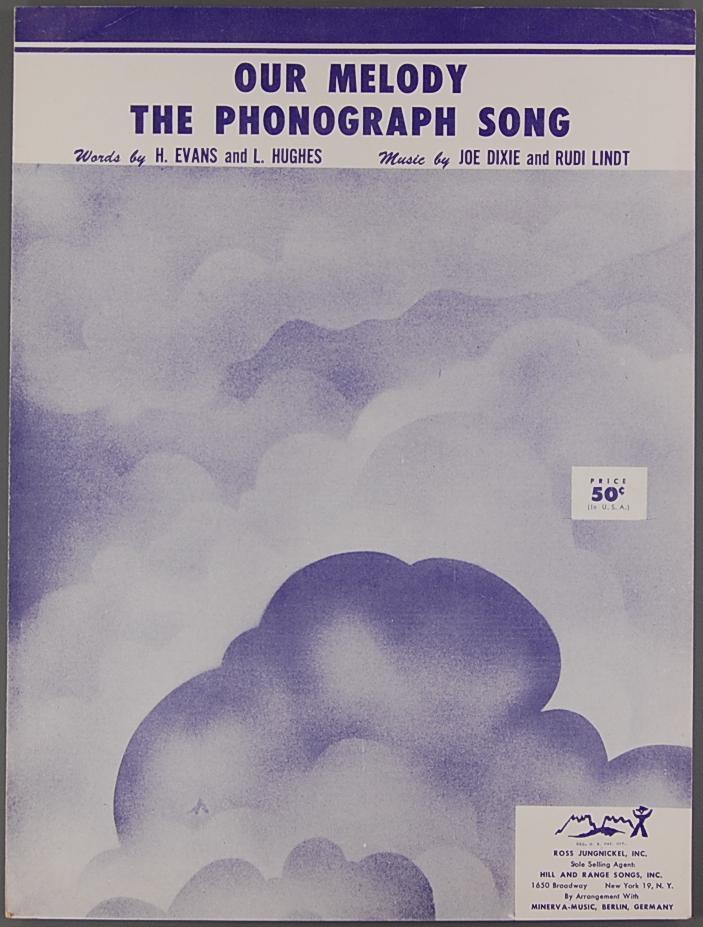
"Our
Melody The Phonograph Song," Minerva Music, Berlin, Germany
1956. Source: Phonographia Sheet Music Collection (PM-0800).
LISTEN
to Guy Lombarbo and His Royal Canadians play Our Melody The Phonograph
Song.
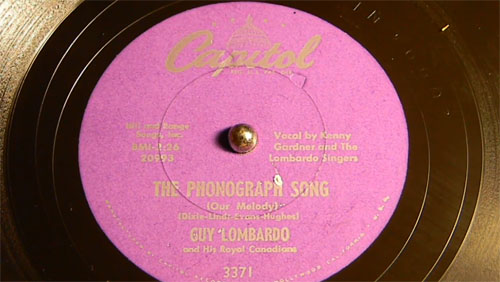
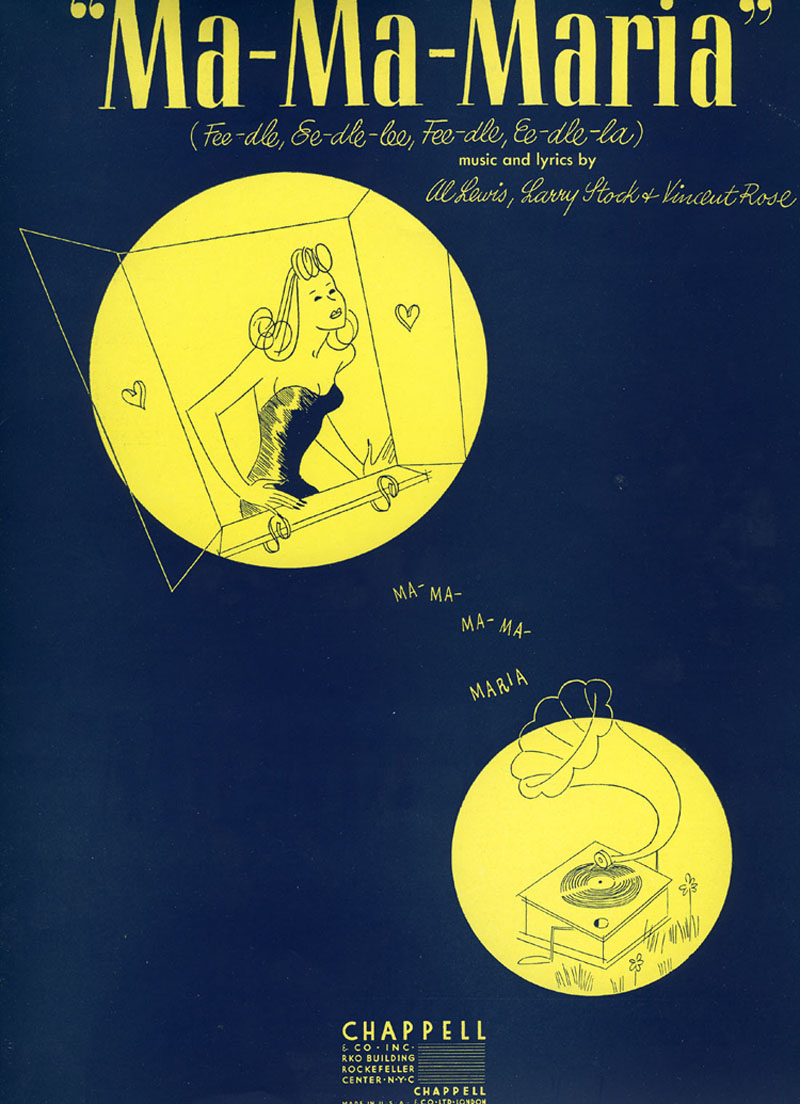
"Ma-Ma-Maria,"
Chappell & Co., Inc., New York City c.1941. Source: Phonographia
Sheet Music Collection (PM-0776)
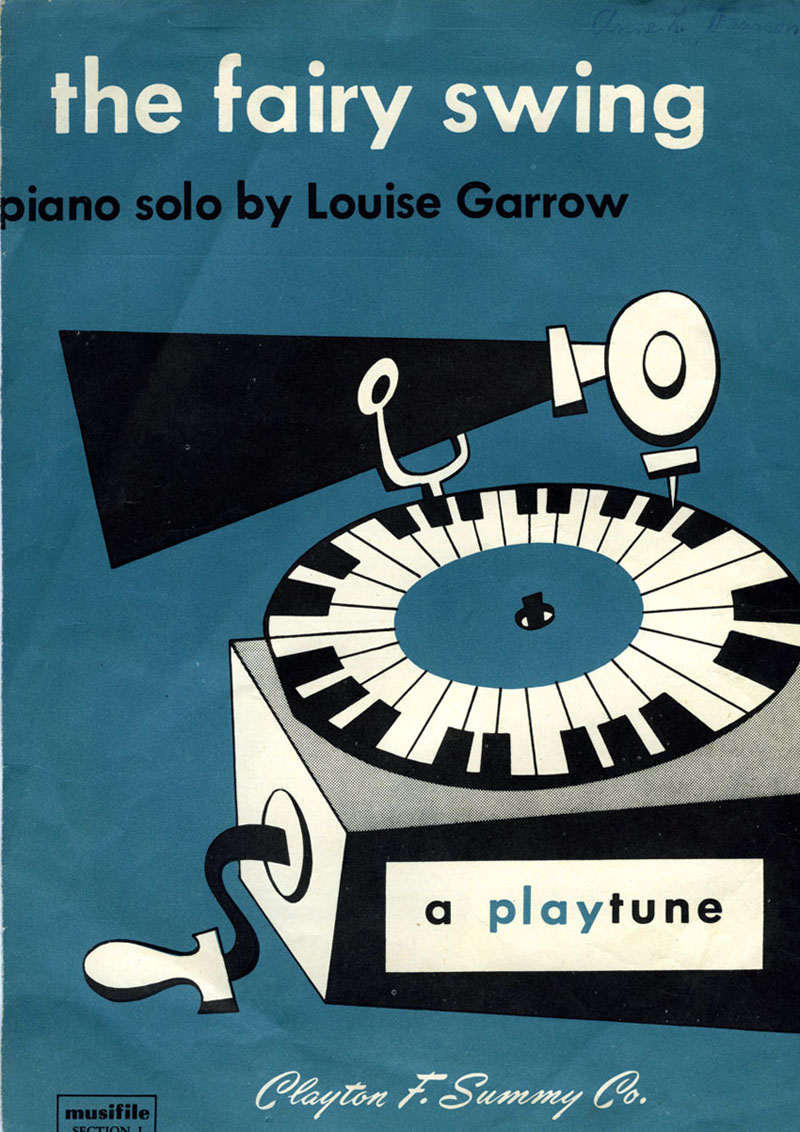
The Fairy Swing piano
solo by Louise Garrow, Clayton F. Summy Co., 1950. Source: Phonographia
Sheet Music Collection (PM-1102)
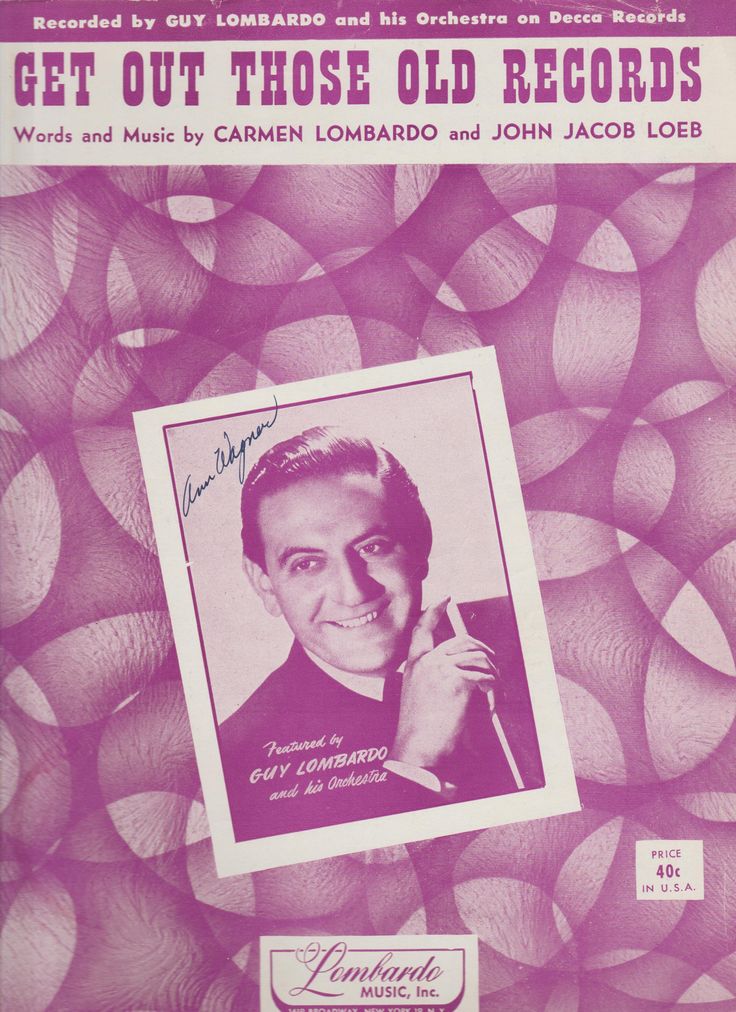
Get Out Those Old Records,
Lombardo Music, Inc., New York City, 1950 - ("those
old phonograph records...")
Sheet Music and Phonograph Ads
The following Columbia Grafonola ad
from 1920 shows the latest songs of Jolson, Bayes, Van & Schenck
and Harry Fox as examples of the latest songs and most popular artists
now available as a record from Columbia. Phonograph companies always
liked to emphasize if the artists were exclusive to their label.
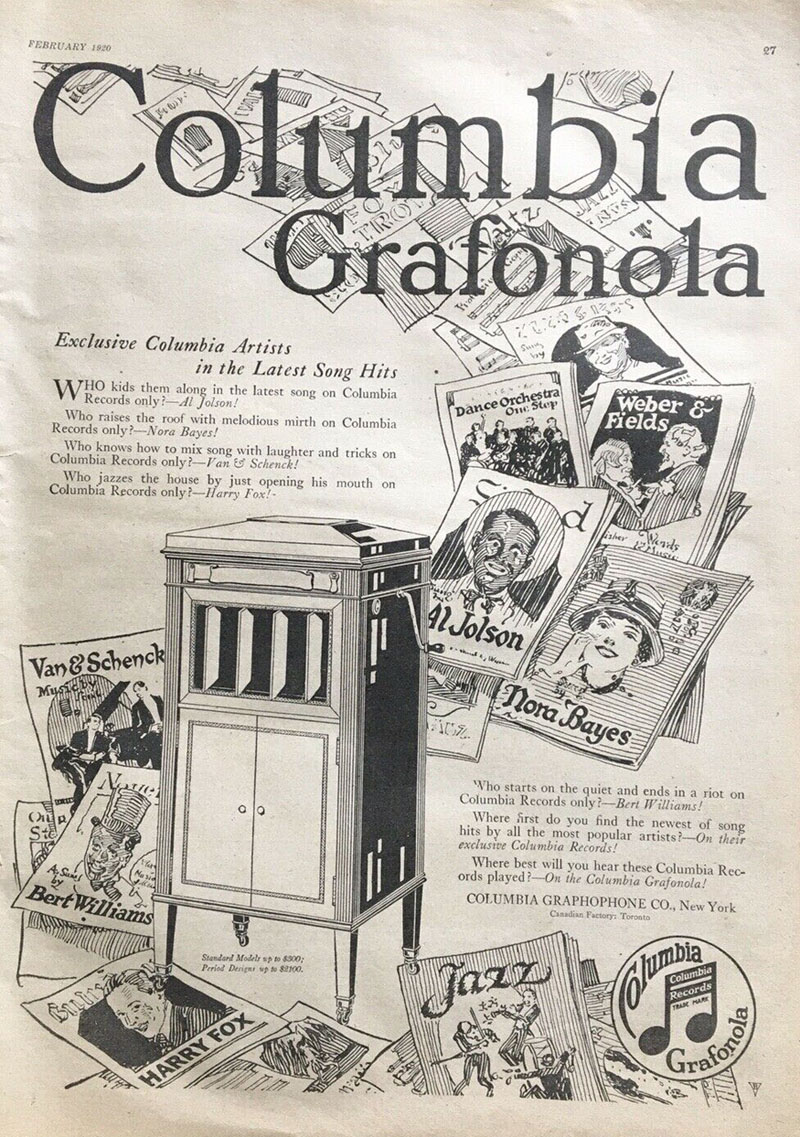
Columbia
Grafonola, Farm and Fireside Magazine, February 1920
Limitations
of "a frozen page of sheet music" overcome by the Phonograph
"The
phonograph, too, was providentially suited to jazz and the blues.
Music that was so improvised and extemporized was not to be captured
on a frozen page of sheet music. The one-time performance, with all
its spontaneity and improvisation, had a unique appeal which the record
caught. Mamie Smith's "Crazy Blues," sometimes called the
first best-selling disk of the blues, was recorded in mid-February
1920 and sold for some months at the rate of eight thousand records
a week, mainly to the urban Negro market. It set the pace and revealed
the market for "race" records."
Daniel
J. Boorstin, The Americans: The Democratic Experience, p. 299
Other Phonosheet
Music
The Phonograph (1894)
(Written, composed and sung by Arthur Lennard) London: Francis, Day
& Hunter
Phonograph March (1894)
Geo. Voelker, published by Harry Coleman
Phonograph Polka by J.C.
Groene & Co., composed by Clarence L. Parfee (c. 1894)
Graphophone Mazurka (1897)
E.H. Frey
And When She Turned the Phonograph.
Song and Chorus by John Cook, Howley Haviland & Co., London (1897).
Cover with coin-operated phonograph
and words of the song coming out of the horn. See "Phonographica,
The Early History of Recorded Sound Observed" by Tim Fabrizio
and George Paul, I-36 (Courtesy of Tom and Sandi McCarthy).
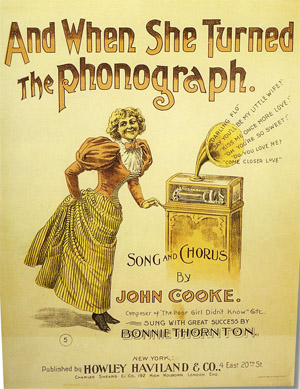
Love in a Phonograph,
Will A. Hellan & William H. Penn, 1904 ("The preliminary
introduction for orchestra or piano included an imitation of a phonograph
being wound.")
Sonora (The Senor Plays
on His Sonora) (1919) words and music by Bide Dudley
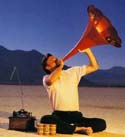
|






































